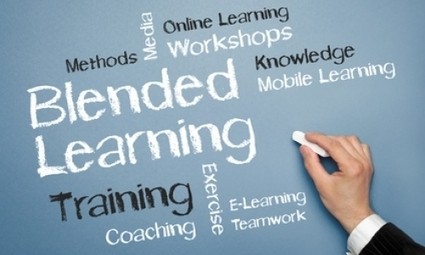Step #1 in District-wide Blended Learning Implementation: Assess Stakeholder Readiness

Step #1 in District-wide Blended Learning Implementation: Assess Stakeholder Readiness first appeared on The Learning Accelerator on April 23, 2014.
By: John Branam
There are many steps on the path to implementing blended learning in school districts. In their enthusiasm to hit the ground running, district leaders may overlook a critical first step, one that can fundamentally impact the success of the entire initiative: issuing stakeholder readiness assessments. TLA Partner John Branam makes the case to district leaders and provides sample assessments.
Pushing readiness assessments while your blended learning implementation plans are emergent is smart. Measuring initial attitudes will allow you to lean into your strengths and shore up your vulnerabilities. Knowing how different stakeholder groups feel (teachers vs. principals vs. parents vs. students, for example) will help you identify your natural allies and the issues you must address to bring others along. By asking questions to your respective communities, you’ll create critical apples-to-apples comparisons (revealing, say, a 40% difference of opinion between how teachers and principals think about principals’ willingness to support teachers through this instructional pivot).
Surveying early will help the district spend its resources (time, money, human and political capital) efficiently. Most districts don’t have extras of these laying around so efficiency is key, but this is particularly important when you’re talking about a system-wide transformation. Implementing blended learning successfully will require stakeholders to take a leap of faith and – at least for district employees – to stretch beyond traditional job descriptions. In response, central offices should be sharply focused in their asks. Clarity within these asks requires data and in this case, scaled and specific data can only come from stakeholder readiness assessments.
Assessing early also establishes the all-important data baseline. Depending on your district’s size, implementation may take between 3-8 years and in many cases, may require additional funding from the community. Regardless, telling the story of your district’s journey of innovation requires a beginning, just as it does a middle and an end. Without initial assessment data, however, how you talk about the journey’s beginning will be blurry at best.
Finally, stakeholder opinions will challenge district administrators’ assumptions. Lots of districts think they know how teachers feel about technology or how parents feel about schools dramatically increasing student-directed learning, but few actually do. Big rewards – including dramatically improving student achievement – require big risks. Asking questions to which you do not know the answer requires authentic courage. So be courageous, take the leap, survey your stakeholders. And by all means, do it sooner than later. Make this your first step.
Download District Stakeholder Blended Learning Readiness Assessments
John Branam is a Partner at The Learning Accelerator. Follow John @pdxbranam and @LearningAccel.



0 Comments
Leave a Comment
Your email address will not be published. All fields are required.